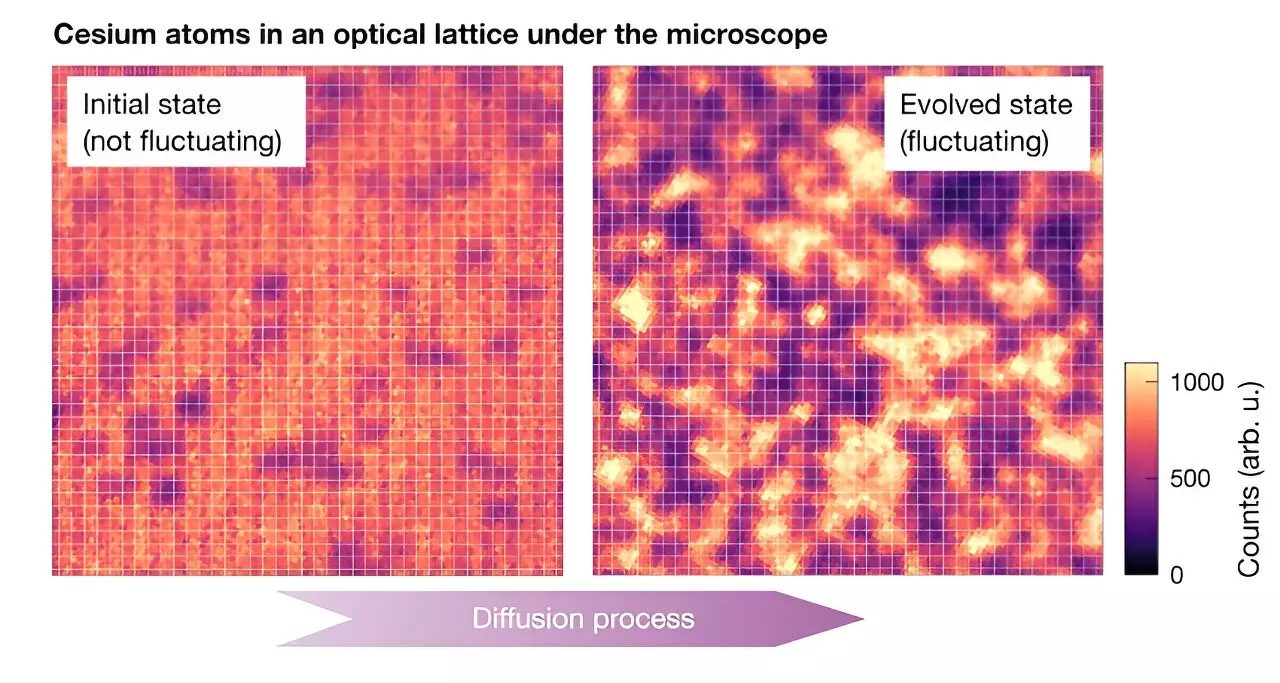Quantum mechanics, often perceived as a realm shrouded in enigmas and intricacies, continues to intrigue scientists, particularly when it comes to understanding how equilibrium fluctuations manifest in extensive quantum systems. A collaborative study from Ludwig-Maximilians-Universität, the Max-Planck Institute for Quantum Optics, the Munich Center for Quantum Science and Technology (MCQST), and the University of Massachusetts has yielded promising developments in this area. By harnessing the potential of a quantum gas microscope, researchers embarked on a journey to decipher the behavior of microscopic quantum particles and their interactions, translating complex phenomena into a more manageable framework for investigation.
Simulating the behavior of a multitude of particles simultaneously poses a formidable challenge; the computational demands can quickly become overwhelming. Julian Wienand, a co-author of the research, highlighted this dilemma, explaining that envisioning a system of particles within a confined space and predicting their movements involves intricate calculations. While the fundamental principles governing particle interactions are well understood, translating these interactions into a coherent prediction using simulation becomes increasingly difficult as the number of particles grows. Fortunately, this is where the principles of hydrodynamics provide an innovative workaround, suggesting that the unpredictable and chaotic nature of particle interactions can be treated with greater simplicity.
Hydrodynamics, traditionally utilized to analyze fluid flow and thermal properties, has been applied to quantum mechanics to forge a link between microscopic particle dynamics and macroscopic phenomena. This approach enables researchers to model particle interactions as a continuous density field rather than tracking each particle individually. Fluctuations in this density metric stem from the fast-paced movements of individual particles, akin to random white noise. By incorporating these fluctuations into classical equations, researchers developed an advanced theoretical framework known as fluctuating hydrodynamics (FHD), which accounts for these stochastic variations and enhances the understanding of complex quantum systems.
The innovative research utilized a 133Cs (cesium) quantum gas microscope, facilitating the control and observation of ultracold cesium atoms within an optical lattice. By creating this lattice through intricate laser configurations, the team established a controlled environment where quantum particles could interact systematically. As they prepared the atoms in a highly ordered state and subsequently manipulated the depth of the lattice, the cesium atoms transitioned into a dynamic diffusion process, revealing critical insights into fluctuation growth and behavior during thermalization.
This meticulous study allowed researchers to track fluctuations over time, confirming that FHD effectively describes these processes. By analyzing the speed of fluctuation growth in tandem with theoretical predictions, the team was able to validate the applicability of FHD to chaotic quantum systems.
Implications of the Findings
The implications of this research extend far beyond the initial study. For one, the team’s findings demonstrate that the behaviors predicted by classical hydrodynamics can analogously apply to quantum scenarios, suggesting a surprising level of simplicity amidst the seeming complexity inherent in quantum mechanics. Wienand emphasized that this relationship holds valuable potential for further exploration, allowing physicists to engage with chaotic quantum systems through a novel lens.
The diffusion constant—central to the study—emerges as an equilibrium property that intriguing relates to out-of-equilibrium quantum systems. This duality opens new pathways for researchers to probe deeper into the interactions of quantum many-body dynamics while offering a mechanism to derive significant properties from fundamentally chaotic systems.
Encouraged by their preliminary successes, Wienand and his collaborators are embarking on additional quantum simulation endeavors using their advanced gas microscope. These forthcoming studies will delve deeper into compelling inquiries surrounding fluctuation behaviors in systems resistant to thermalization. The exploration of higher moments of fluctuations, such as skewness and kurtosis, could further enrich the understanding of quantum behavior. Additionally, adapting FHD to encompass more complex observables or even exploring exotic quantum systems presents a captivating vista for research expansion.
The research conducted by this collaborative team illuminates the profound complexities inherent in quantum systems, while also showcasing innovative methodologies that promise to bridge the gap between classical analogies and quantum realities. As scientists continue to push the boundaries of understanding in this dynamic field, the revelations surrounding equilibrium fluctuations will undoubtedly contribute to new theories and practical applications in quantum mechanics.

